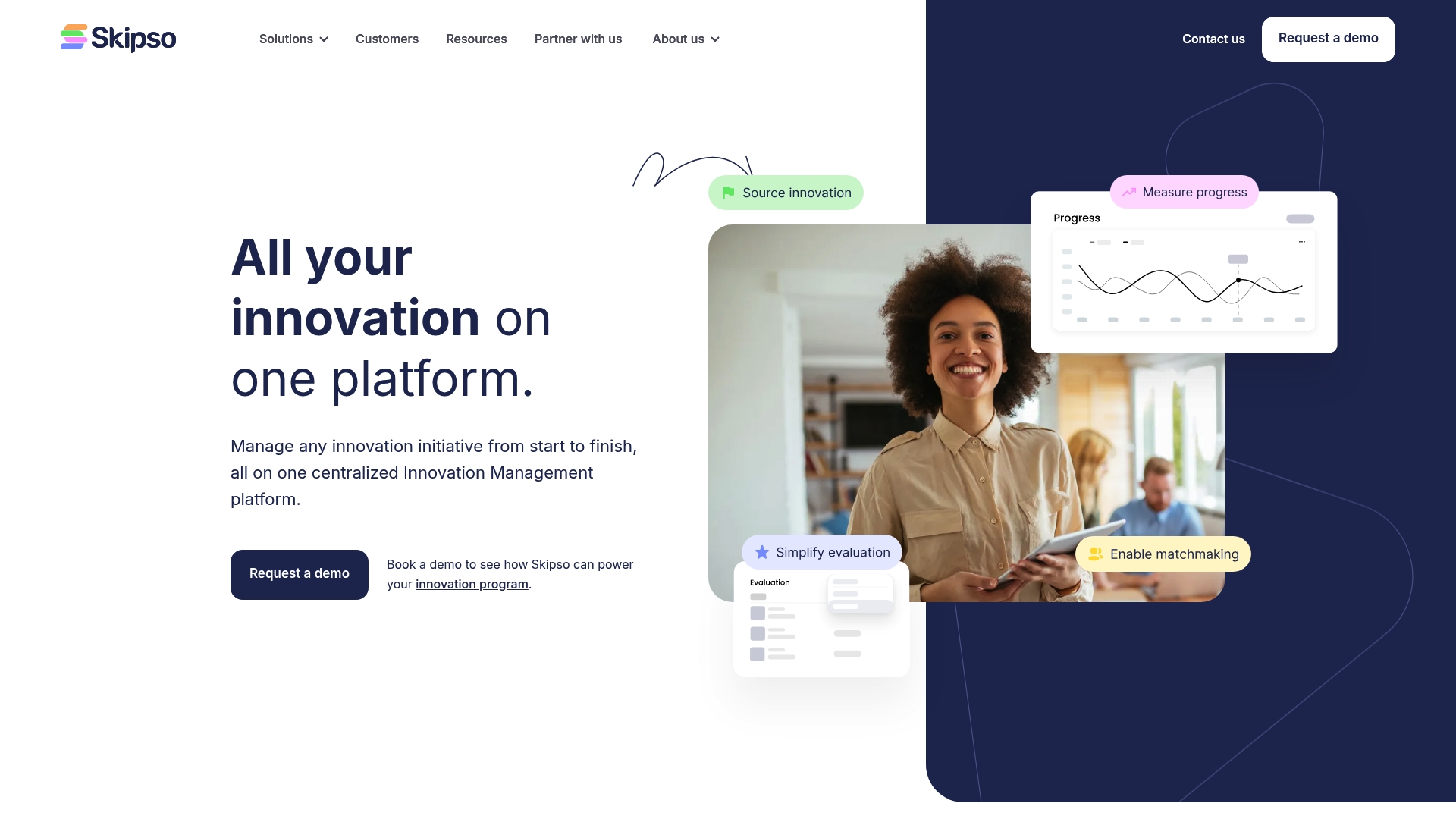


Complete Guide to Building Community Partnerships
Over 70 percent of social innovation breakthroughs stem from strong community partnerships, according to recent research. Facing complex challenges like health equity and economic opportunity demands more than traditional solutions. When organizations, universities, businesses, and grassroots groups join forces with purpose, they create new spaces for collective action and lasting impact. Understanding the core structures and values behind these alliances helps unlock their potential for positive change.
Key Takeaways
| Point | Details |
|---|---|
| Strategic Collaboration | Community partnerships in innovation require multi-sector involvement to effectively address societal challenges through collective impact frameworks. |
| Core Success Factors | Successful partnerships hinge on common agenda, shared measurements, and continuous communication to facilitate meaningful social change. |
| Partnership Dynamics | Clearly defined roles and responsibilities are essential to navigating complex collaborative ecosystems, ensuring effective management and communication. |
| Adaptability | Flexible, adaptive approaches are crucial for partnership sustainability and overcoming common pitfalls like power imbalances and continuity challenges. |
Table of Contents
- Defining Community Partnerships In Innovation
- Types Of Community Partnerships Explained
- Key Characteristics And Success Factors
- Process Of Forming Effective Partnerships
- Roles, Responsibilities, And Common Pitfalls
Defining Community Partnerships in Innovation
Community partnerships in innovation represent strategic collaborations where multiple stakeholders unite to generate transformative solutions that address complex societal challenges. Collective impact emerges as a powerful framework for understanding these dynamic networks, positioning them as structured multi-sector collaborations centered around shared goals and collaborative learning.
According to research on collective impact, these partnerships are characterized by their commitment to systems-level change, with equity serving as a fundamental guiding principle. Key attributes include:
- Alignment of diverse institutional perspectives
- Coordinated action across multiple sectors
- Shared measurement and learning mechanisms
- Commitment to sustainable social innovation
Research from higher education institutions conceptualizes these partnerships as dynamic public-private ecosystems that transcend traditional boundaries. By integrating universities, civic organizations, and community groups, these collaborative networks create powerful platforms for addressing socio-economic challenges and generating meaningful social value.
Successful community partnerships in innovation require intentional design, mutual respect, and a genuine commitment to collaborative problem-solving. They represent more than transactional relationships—they are living, adaptive systems where knowledge, resources, and collective intelligence converge to unlock unprecedented opportunities for transformative change.
Types of Community Partnerships Explained
Community partnerships are dynamic collaborative frameworks that connect diverse stakeholders to drive meaningful innovation and social impact. Research from Michigan State University reveals multiple strategic approaches to categorizing these partnerships, offering innovation leaders nuanced insights into collaborative structures.
Partnership Categorization by Sector
Here’s a summary of community partnership types and their typical stakeholders:
| Partnership Type | Main Stakeholders | Typical Collaboration Focus |
|---|---|---|
| Government-Community | Public agencies Community groups |
Policy development Public services |
| Nonprofit-Community | Nonprofits Local organizations |
Social impact Service delivery |
| Business-Community | Corporations Residents Local leaders |
Economic development CSR initiatives |
| Academic-Community | Universities Community partners |
Research Education Engagement |
| Civic-Community | Civic orgs Neighborhood groups |
Grassroots action Civic engagement |
Community partnerships can be classified across several critical sectors:
- Government-Community Partnerships: Connecting public institutions with local communities
- Nonprofit-Community Partnerships: Social impact organizations working directly with community groups
- Business-Community Partnerships: Corporate entities engaging local stakeholders
- Academic-Community Partnerships: Universities collaborating with external organizations
- Civic-Community Partnerships: Community organizations working together across different domains
Partnership Durations
According to the research, partnerships also vary by engagement duration:
- Short-Term Partnerships: Focused, time-limited collaborative projects
- Long-Term Partnerships: Sustained, strategic collaborations with ongoing commitments
- Intermittent Partnerships: Flexible engagement models with periodic interactions
According to Virginia Commonwealth University’s community engagement glossary, these partnerships fundamentally represent “sustained collaborations” designed to exchange knowledge and resources for mutual benefit.
 The core objective remains creating transformative value that transcends traditional organizational boundaries, enabling innovative solutions to complex societal challenges.
The core objective remains creating transformative value that transcends traditional organizational boundaries, enabling innovative solutions to complex societal challenges.
Key Characteristics and Success Factors
Building effective community partnerships requires a sophisticated understanding of the critical elements that transform collaborative efforts from theoretical concepts into impactful realities. Research from the collective impact framework illuminates the core success factors that distinguish extraordinary partnerships from ordinary collaborations.
Strategic Partnership Characteristics
Continuity emerges as a fundamental characteristic of successful community partnerships. According to a peer-reviewed public health study, this encompasses three critical dimensions:
- Past Experience: Documented history of successful collaborations
- Future Collaboration Willingness: Commitment to ongoing engagement
- Community Connectedness: Strong local ties and established reputation
Core Success Factors
The collective impact framework outlines five pivotal success factors for driving meaningful social innovation:
- Common Agenda: Shared vision and aligned strategic objectives
- Shared Measurement Systems: Consistent metrics for tracking progress
- Mutually Reinforcing Activities: Complementary efforts across stakeholders
- Continuous Communication: Transparent and regular information exchange
- Backbone Support: Dedicated infrastructure supporting partnership goals
These factors transform community partnerships from fragmented initiatives into powerful, integrated systems capable of addressing complex societal challenges.
![]() By prioritizing strategic alignment, mutual understanding, and adaptive collaboration, organizations can create resilient partnerships that generate sustainable, transformative impact.
By prioritizing strategic alignment, mutual understanding, and adaptive collaboration, organizations can create resilient partnerships that generate sustainable, transformative impact.
Process of Forming Effective Partnerships
Partnership formation is a strategic, intentional process that requires deep understanding of collaborative dynamics and mutual value creation. Research on community-based participatory research reveals a comprehensive approach to building equitable, sustainable partnerships that transcend traditional transactional models.
Collaborative Engagement Stages
The partnership formation process involves several critical stages:
- Initial Relationship Building
- Identify potential partners with aligned missions
- Conduct preliminary stakeholder assessments
- Establish initial communication channels
- Trust and Alignment Development
- Explore shared goals and potential collaborative opportunities
- Create transparent communication frameworks
- Develop mutual understanding of expectations
Key Partnership Formation Principles
According to academic research on community engagement, effective partnerships are characterized by:
- Co-Creation: Collaborative problem-solving approaches
- Mutual Trust: Establishing genuine, reciprocal relationships
- Inclusive Participation: Involving diverse stakeholders across sectors
- Shared Decision-Making: Equitable contribution and governance
Successful partnerships emerge from a cyclical, adaptive process of co-learning and continuous refinement. By prioritizing genuine collaboration, mutual respect, and shared value generation, organizations can develop robust, transformative community partnerships that drive meaningful social innovation.
Roles, Responsibilities, and Common Pitfalls
Partnership dynamics represent complex ecosystems of collaboration where clearly defined roles and mutual understanding become critical success factors. A comprehensive research study emphasizes that the strength of community partnerships fundamentally depends on transparent communication and well-articulated responsibilities.
Strategic Role Allocation
Effective partnerships require strategic role distribution across key domains:
- Strategic Leadership: Setting overall vision and direction
- Operational Management: Implementing collaborative activities
- Resource Coordination: Managing financial and human resources
- Communication Liaison: Facilitating inter-organizational dialogue
- Monitoring and Evaluation: Tracking partnership performance
Common Collaboration Pitfalls
Systematic research in collaborative approaches highlights critical challenges that can undermine partnership effectiveness:
- Power Imbalances
- Unequal decision-making capabilities
- Hierarchical communication structures
- Asymmetric resource distribution
- Continuity Challenges
- High partner turnover rates
- Inconsistent engagement levels
- Poorly managed knowledge transfer
Successful partnerships require continuous negotiation of roles, proactive conflict resolution, and a commitment to genuine collaborative principles. By anticipating potential challenges and designing flexible, adaptive governance models, organizations can transform potential pitfalls into opportunities for deeper, more meaningful engagement.
Ready to Build Stronger Community Partnerships?
Navigating the complexities of real-world collaboration is tough. If your team struggles with fragmented communication, unclear roles, or inconsistent progress tracking, you are not alone. Building lasting partnerships requires more than good intentions. It demands the right tools for trust, shared measurement, and constant alignment – exactly the elements highlighted in our Complete Guide to Building Community Partnerships.

With Skipso, you get a comprehensive innovation management platform designed for high-impact teamwork. Simplify stakeholder engagement, streamline resource coordination, and enable shared measurement that fuels success at scale. Do not let power imbalances or continuity challenges slow your impact. Visit the Skipso platform to see how our features turn collaboration into measurable results. The future of community partnership starts with powerful infrastructure. Start today – your next breakthrough depends on it.
Frequently Asked Questions
What are community partnerships in innovation?
Community partnerships in innovation are strategic collaborations among diverse stakeholders aimed at creating transformative solutions for complex societal challenges. They emphasize collective impact through shared goals and collaborative learning.
What are the key characteristics of successful community partnerships?
Successful community partnerships are characterized by continuity, mutual trust, strategic alignment, inclusive participation, and transparent communication. These elements foster strong relationships and effective collaboration.
How can organizations form effective community partnerships?
Organizations can form effective community partnerships through a structured process that includes initial relationship building, developing trust and alignment, co-creating solutions, and establishing clear roles and responsibilities among partners.
What are the common pitfalls in community partnerships?
Common pitfalls in community partnerships include power imbalances, continuity challenges due to partner turnover, and poorly managed communication. Addressing these challenges proactively helps enhance partnership effectiveness.
Recommended
- How to Manage Partnerships for Maximum Impact
- Unlocking the potential of partner ecosystems with innovation grants
- 5 rules for building resilient innovation partner ecosystems
- The Ultimate Guide to Building an Innovation Ecosystem for Public Sector Organizations and Industry Associations
- 7 Ways to Build Team Trust for Lasting Success - Berriault and Associates Consulting Group













